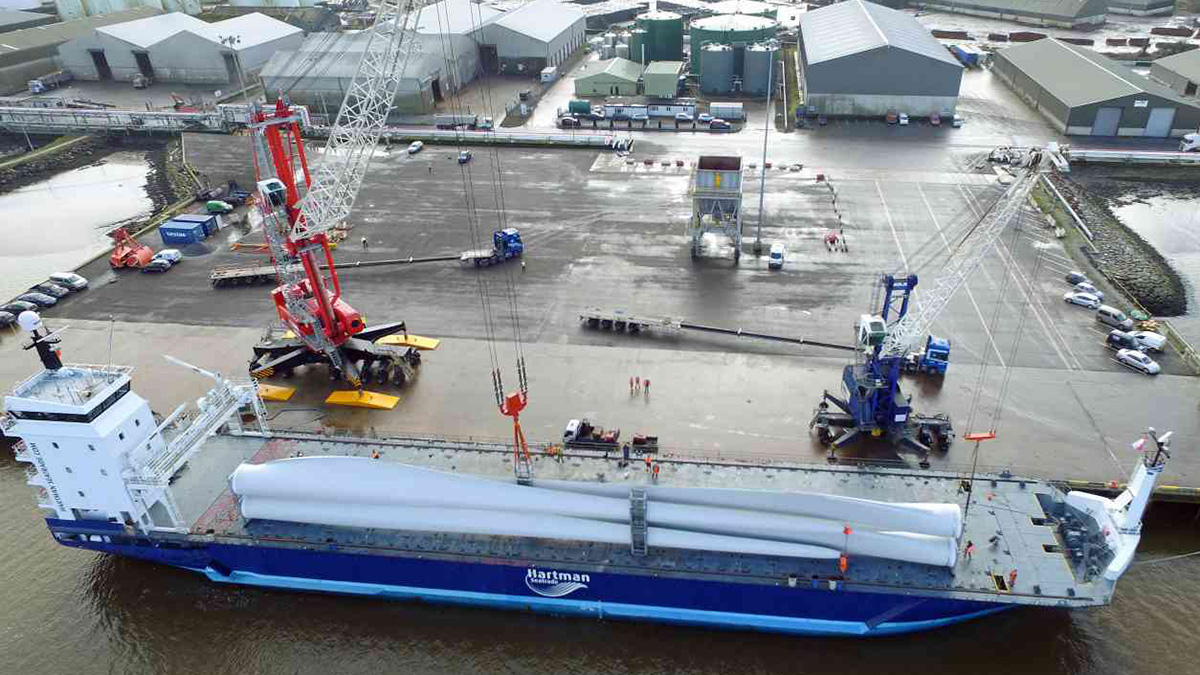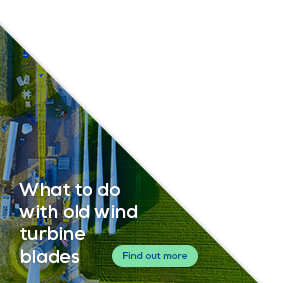News
Ports are the backbone of Europe’s wind energy
30 October 2025
This week, the WindEurope Ports Platform meeting in Ireland puts the spotlight on a simple truth: there is no wind without port investments. Ports are stepping up. The meeting comes as Europe prepares two major strategies for 2026: the EU Maritime Industrial Strategy and the EU Ports Strategy.
Ports are essential for wind energy. Across Europe, ports are facing new demands. The rapid growth of offshore wind means ports need more space, stronger infrastructure, and better logistics. Larger turbines and new technologies require ports to adapt quickly. However, scaling up offshore wind is much faster than development of port expansion. Different types of wind projects also mean ports must specialise, whether for manufacturing, installation, assembly, or maintenance. The scale is substantial: European ports collectively need €2.4bn of additional investments in the coming years to keep pace with the 2050 targets.
But ports are not only vital for offshore wind. In many places – including Ireland – equipment for onshore wind farms also passes through ports. Turbine components, blades, and towers are shipped, handled, and transported inland via port infrastructure. This makes ports a critical enabler for both onshore and offshore wind development.
Unlocking financing and policy frameworks
To make these investments possible, a mix of public and private funding is needed. European ports benefit from EU-level support, such as the Connecting Europe Facility and loans from the European Investment Bank. National governments can also help by providing guarantees, targeted funding, and policies that encourage efficient use of existing infrastructure. Stronger cross-border cooperation between ports will help avoid duplication and make the best use of resources.
In Ireland the lack of port infrastructure is a significant bottleneck for offshore wind. The government has launched a National Plan for Offshore Wind Development. This is a positive step. But more funding is needed. A 900 MW offshore wind auction is expected this November. By the time the awarded winner secures FID and starts construction, port infrastructure should already be fully operational to support timely and efficient deployment.
The European Commission will present two key strategies in the first quarter of 2026. The EU Maritime Industries Strategy will focus on supporting vessel manufacturing in market segments where Europe remains competitive, especially Service Operation Vessels and Crew Transfer Vessels. The EU Ports Strategy will aim for greater coordination between Member States to align the timing and scale of offshore wind tenders, faster permitting for port upgrades, and stronger financial support from the CEF and the European Investment Bank. Both strategies will recognise ports as central energy and transport hubs.
Europe is investing heavily in its ports. The European Commission’s proposal for the new long-term budget, the Multiannual Financial Framework (MFF) for 2028–2034, sets aside €81.4 billion for the Connecting Europe Facility (CEF). Of this, about €34 billion will go to transport infrastructure via CEF Transport, including ports. For comparison, the current CEF Transport budget (2021–2027) is around €24 billion. This increase is very much welcomed. Better financing means more opportunities to improve and expand our offshore wind ports.
Ports at the forefront
Ports are not waiting. They are upgrading facilities, expanding capacity, and working with industry partners to meet the demands of the wind sector. In the past three years, €4.4bn have been invested in ports infrastructure. With these investments, Europe can deliver its 2030 offshore wind targets and reach an installation capacity of a minimum of 10 GW/year. But offshore wind deployment must further increase to 15 GW/year post-2030. It will require an additional €2.4bn investment.
The message from Ireland is clear: ports are enabling offshore wind and onshore. Investments need to keep happening. With the right strategies and funding, ports will continue to drive Europe’s clean energy investments. There is no offshore wind without port investments—and Europe’s ports are ready to deliver.
Erik Bertholet, Business Manager at Eemshaven: “Securing a port is nowadays as important as securing a turbine, foundation and installation vessel”.
Diana Barrios, Head of Membership at WindEurope: “Without strategic investment in port infrastructure, offshore wind cannot scale up. Europe must treat ports as energy assets, not just transport hubs”.


